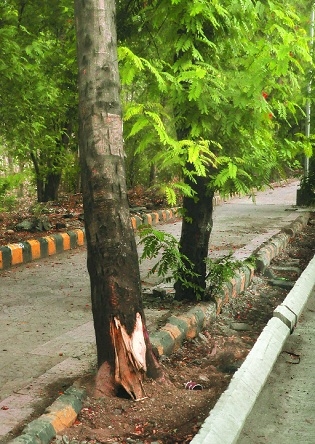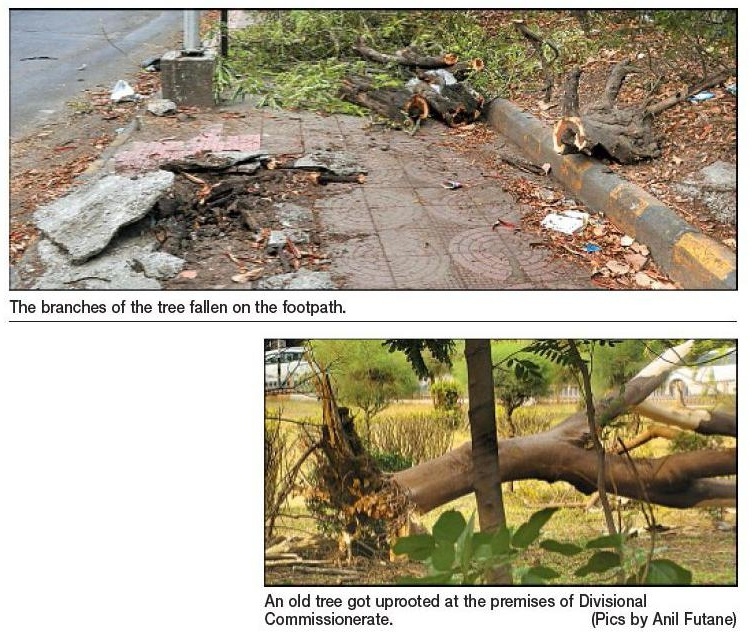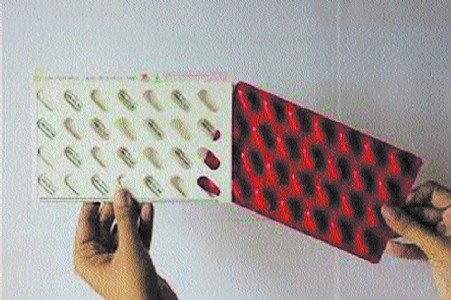‘Depleting water table, concretisation main reasons behind uprooting of trees in city’
| Date :01-Jun-2022 |

By Kaushik Bhattacharya :
More than 70 trees uprooted in mild wind speed in city
The recent pre-monsoon activity that brought about mild to strong wind force led to uprooting of more than 100 trees in a span of just half an hour making one wonder the reason behind it. These uprooted trees blocked many roads, substantially damaged public property throughout the city. The Fire and Emergency Services Department of Nagpur Municipal Corporation (NMC) along with powermen worked throughout the night to clear the roads and restore normalcy. The incident had ocurred on May 24. The city experienced this type of calamity for the first time in the history. However, the environment experts in the city claimed it as a man-made calamity which was caused due to decrease in ground water table aided by mass concretisation. After the stong winds for half an hour, the civic body claimed that it was ready to face any emergency situation that may arise in the rainy season. But, that particular pre-monsoon activity raised a different challenge before the corporation in form of uprooting of trees and it is going to be a difficult task for them to handle during this monsoon season.

Dr Anjan Kumar Chatterjee, President of Gondwana Geological Society and Ex-Additional DG, Geological Survey of India claimed, “Ground water plays a very important role in the preservation of trees by nourishing them, resulting in their robust growth and upkeep. We usually ignore ground water’s and aquifer’s importance from the vegetation sustaining point of view. Seventy trees getting uprooted in half an hour of a storm at Nagpur is very alarming.” A perusal of a recent Central Ground Water Board (CGWB) report depicts the ground water table below surface in metres for Nagpur city during 2001-2010, as 6.05 m (summer) to 3.9 m (post monsoon) on an average.
The VNIT area in Bajaj Nagar is listed as 2.1 m (summer) to 1.3 m (post monsoon) which is a bit encouraging,” said the expert. Due to the rampant construction of cement roads and the mushrooming of numerous new civil structures, plus the urbanisation since 2010, the ground water scenario of Nagpur could have worsened, said Dr Chatterjee. Such civil structures impair the availability of area for an effective ground water seepage from surface and recharge during monsoon months. We have also not spared natural water bodies that have either become layouts now or their vicinities are getting ‘beautified’ with civil structures, claimed the expert. According to an Indian Institute of Science report by Subhash Chandra N S, the urbanisation process in Bangalore has resulted in a loss of aquatic ecosystems by 79% during 1973-2010 and a 75% decline in vegetation. A similar study for Nagpur if conducted could yield more surprises, Dr Chatterjee informed. Kaustav Chatterjee, Founder, Green Vigil Foundation and an environment expert said, “In our city, trees are getting uprooted as the roots are not getting water and nourishment and getting weaker, losing the grip with the soil. The ground water table has gone significantly low and construction of roads and footpath have choked the trees, so water percolation especially during rainy season has reduced to a large extent.” Population explosion is one of the major cause of ground water depletion.
The recent trend of demolishing a stand alone house and constructing a multistory building has increased the water demand to manifold resulting in depletion of ground water table, claimed Chatterjee. Anasuya Kale-Chhabrani, President, Swacch Association and green activist, said, “Unplanned execution of work, unnecessary time and again digging the same areas instead of one time co-ordinated work, no water percolation, choking the trees completely (concretisation), contractors are never asked for accountability, soil depletion, insensitive approach towards environment are the major reasons of uprooting of trees in the recent thunderstorm activity.”







